Mar 9, 2024
Chandar Pattabhiram
Chandar Pattabhiram is the Board of Directors for: Donnelley Financial Solutions (NYSE:DFIN), Blueshift & Osaat.org – a non-profit transforming education in rural India. Chandar has previously been a CMO at Coupa and Marketo, and VP of Marketing at IBM Cast Iron. He was the former Strategic Advisor to Gainsight and Freshworks. He is LinkedIn Top 5 CMOs to follow for thought-leadership.
One Line Life Lessons from Chandar
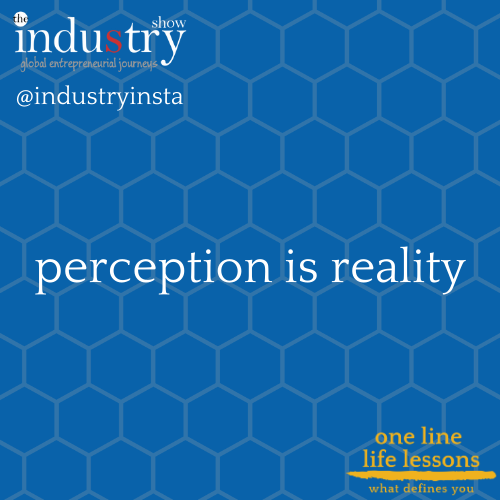

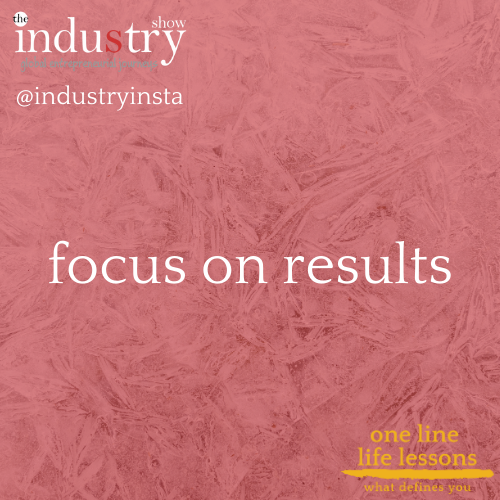
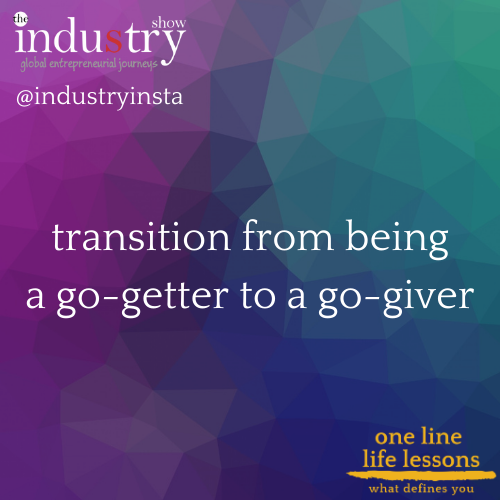
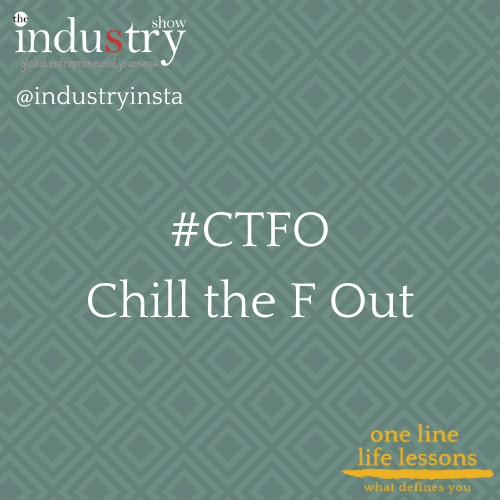
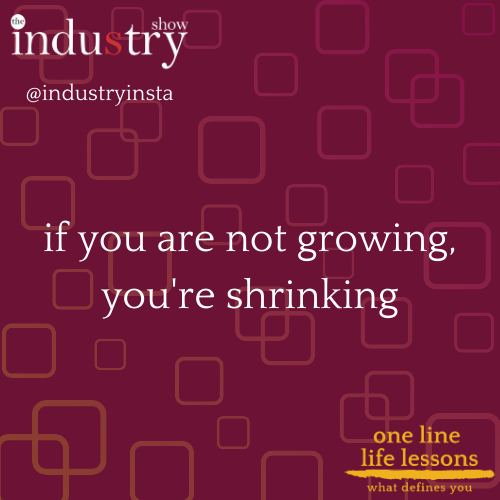
Episode Highlights
- 00:00 – Introduction of Chandar Pattabhiram as a storyteller and competitive individual valuing positive energy and meaningful relationships.
- 01:30 – Nitin Bajaj praises Chandar’s success in scaling companies from startups to public entities, focusing on geographic reach, revenue growth, and employee development.
- 03:45 – Chandar discusses his career journey from startups to IBM, emphasizing market leadership and leadership development as key aspects.
- 05:20 – The concept of “stairway to customer heaven” in go-to-market strategies is introduced, highlighting the importance of alignment between sales, marketing, and customer success.
- 07:10 – Chandar, a “full brain executive,” combines storytelling with engineering thinking to drive strategies for collective achievement in organizations.
- 09:05 – Importance of finding product-market fit before scaling up and insights on operating frameworks for successful strategies are shared.
- 11:30 – Alignment in organizations for differentiation and positioning in go-to-market strategies is emphasized for confidence, innovation, and organizational harmony.
- 13:15 – Learning from failures in business, focusing on go-to-market strategies, and selling products to markets appreciating unique selling points are discussed.
- 15:00 – Significance of aligned motives and financial incentives for success and the need for alignment at the executive level are underscored.
- 17:20 – The importance of flexible perseverance in startups, personal success stories, and interests like tennis, karaoke, and continuous learning are highlighted.
- 19:30 – Life lessons from family, transitioning to a “go giver” mentality, and adopting a “CTFO” philosophy for problem-solving are discussed.
- 21:15 – Joining a charity board aids in a transitioning mindset, emphasizing the importance of not dwelling on minor issues and expressing gratitude for shared insights.
Show Transcript
Transcript - Full Episode
[00:00:00 – 00:00:10] Nitin Bajaj
Hey, everyone. Welcome to the industry show. I’m your host, Nitin Bajaj. And joining me today is Chandar Pattabhiram. Chandar, welcome on the show.
[00:00:11 – 00:00:14] Chandar Pattabhiram
Thank you, Nitin. Thank you for having me. It’s great to be here today.
[00:00:15 – 00:00:18] Nitin Bajaj
The pleasure is all ours. Let’s start with who is Chandar?
[00:00:19 – 00:01:01] Chandar Pattabhiram
You went metal on me on the first question on who is Chandar. But to answer the question, Chandar, I’ll answer in 3rd person since you asked me in that context. Chandar is someone who, let’s say, is a storyteller, someone who’s a framework based thinker in in in how he thinks, how he operates, someone who believes in the power of positive energy in everything he does, Someone I would say is very competitive. I play to win and whether it’s in the neighborhood tennis or in the technology landscape, someone who plays to win. And I think most importantly, someone who believes in the power of relationships. Ultimately, it’s all about relationships, and it’s the connections that is the fuel to my journey forward in life. And I think that’s very important, and that kind of prop encapsulates me.
[00:01:03 – 00:01:29] Nitin Bajaj
Chandar, I’ve known you for a bit now, and every time I meet you, I learn something from you. And it makes me want to ask you this question beyond knowing who is Chandar is. What is Chandar’s mission and vision? Right? You’re a big picture person. And as you said, you play to win. You believe in relationships. What is the big mission and vision? Yeah. It’s just how much
[00:01:29 – 00:02:21] Chandar Pattabhiram
meta you wanna get on that. I’ve always looked at it whether I’m doing something on the professional front or on the personal front is, are you doing something meaningful that’s meaningful and that’s making an impact? And doing it with like minded people, and doing it so that you are learning and growing. Because if you’re not growing, you’re shrinking. That’s a simple way to do it, look at it. And while you’re doing it with people that you’re also growing along the way, and most importantly, at the end of it, along the way, you’re having a lot of fun with it. So that’s really where whatever that path is, whether that’s help doing a software company, whether doing something in in the charity on my personal side, or doing some initiative that I have. I think there’s that set of attributes of that I talked about. Is it meaningful? Is it something that I can learn from? Is it something that I can grow from? Is it something I can grow people with? And at the same time, is it something that’s a lot of fun? That’s the way I think about it.
[00:02:22 – 00:03:01] Nitin Bajaj
I love that. And I think that’s the right compass. That’s the right north star to have. And as I think about your background, your experience, you’ve been you’ve taken companies to many different levels, almost from a start up to a publicly listed company in several cases. Give us a sense for the word you chose, very apt. Give us a sense of the impact that you’ve created, whether it’s terms of geographies, revenues, number of employees. It just I think that word resonates when I think about you. What’s the impact Chandar has created?
[00:03:02 – 00:04:39] Chandar Pattabhiram
It’s just not me. It’s in cap that I impact. I’ve cocreated working with some really amazing people along the way. But I would say that if you look at it I’ve worked in small boats. I worked in speedboats, and I worked in oil tankers. If you look at it, my journey in terms of companies, small start ups, midsize, you know, fast growth speedboat companies that are public companies. And then the oil tanker was IBM from one perspective. If I have to nutshell it, I would say one is create leadership. 1 is market leading companies. And ultimately, for companies to win, if you play to win, Nitin is you have to establish market leadership. Right? And and really creating and at the same time, you have to activate a community and have passionate customers and stuff like that. But creating that market leadership, whether that’s Coupa helping create this number one market leader in the area of business and management just like Salesforce did Nitin customer relationship management Chandar marketing automation. And Cast Iron, for example, small company that went on to become market leader in SaaS or software cloud integration, only one of the pioneers of that. So creating that market leaders and at the same time impacting people impacting that’s one impact macro. But then the other impact I would say is creating leaders to start market leaders, People will become great leaders and helping influence them along the way. There’s a line that my friend uses, which is leader leaders create leaders. And if I reflect back, I’ve been privileged to work with some very smart people. And some of them that, you know, who have what I call life supported in their journey as a manager have grown on to become senior executives, whether that’s presidents or CMOs in public companies, private companies, etcetera. So I think that’s also a big accomplishing impact from that perspective. Right? 1 is around what you do for your company, and 2 is what you do for people. I think you have to take the combination of both.
[00:04:40 – 00:05:06] Nitin Bajaj
So true. And I wanna double click on that and go deeper. And on one end where my startup founder had and then another one as an investor. And I wanna know if I were to leverage Chandar and his experience, his expertise to, let’s say, speed up my go to market. Right? What what is Chandar unfair advantage?
[00:05:08 – 00:05:10] Chandar Pattabhiram
Yeah. Unfair advantage. Okay. Nothing. No.
[00:05:10 – 00:05:13] Nitin Bajaj
But I think Understatement of the year would go on.
[00:05:13 – 00:07:00] Chandar Pattabhiram
No. I think look. If you simplify it, a great company if you look at it, it’s very simple formula. A great company equals great product times great go to market at the simplest level. Right? There’s operation excellence, culture, all these things. But the a great company needs to have great product times great go to market. I think where my value comes in is that if a great company is yellow or red, the product could be green, but the go to market is red. Yes. That’s really where I can make that equation green by really coming in and driving that part of the equation to make that turning from the blinking red to a green to drive the collective success for the organization. And that means really all aspects of go to market. I call this the stairway to customer heaven, being Led Zeppelin fan. Mhmm. Right from awareness to acquisition, to expansion, to advocacy, stairway to heaven in terms of how can you drive alignment between the areas of sales, marketing, customer success to ultimately drive the climb the stairway to heaven and to make that area of the formula green. That’s really where companies see what kind of leverage mean, unleveraging mean. I think from a unfair advantage, I’m not sure. I think look. The way I have prided myself is in and you have to say this with humility, is in being a full brain executive just like you have full stack developers. And the idea there is that I’m a storyteller on the right brain side of it. But I was also an engineer, so I understand framework based thinking and operation execution. So bringing that combination into an organization can has really helped me having that undergrad in engineering and go to business school. It really has helped me to bring that combination. Naturally, I like to tell stories, but you have to ground that with framework based thinking. So if I draw a Venn diagram of strategic thinking, science, and storytelling, I can operate in that Venn diagram in a reasonably good way. And that’s that I would say is humbling my ownliness or my differentiation.
[00:07:01 – 00:07:23] Nitin Bajaj
I love that visual, a full brain executive. And I know for a fact that many organizations could use one. And that brings me to my next question. You do advise a lot of startups but also several publicly listed companies. I would love to know what is the biggest challenge you’re helping them with right now?
[00:07:24 – 00:09:20] Chandar Pattabhiram
Yeah. I think, look, we all have to self scout and figure out, like, where our strengths are and where we’re not. We won’t add value. Right? And I think in many cases, a friend of mine who’s a venture capitalist uses the line, you scale it only after you nail it. He’s talking about you have to find product market fit first, and then you scale it. Right? So because billions are made or lost in the Silicon Valley at the intersection of products and markets. Right? And that’s really where the magic happens. Right? So once early product market fit has been established by an organization where someone like me adds value to their organization and advisory capacity, but there’s large one. There’s 2 areas. 1 is how do you drive rinse and repeatability? The scale the game becomes all about scale. How do you drive rinse and repeatability? And if you look at a bowtie, just look at bowtie framework. Right? There’s a lot of things early in the company does. And then it says, okay. I’ve established product market fit where I come to the middle of the bowtie picture and says, okay. Now I wanna focus here. And the right hand side of the bow bowtie is all about rinse and repeatability. Right? So that’s where I come in and says, how do you create an operating thing, for instance, that involves the go to market strategy, the positioning, the marketing, the selling? How do you create alignment? How do you drive customers? All those pieces in the go to market. Right? I would say that’s really where I advise companies. And also on really understanding your true differentiation and positioning. Right? A lot of times what happens is that companies think they are different this way, but the reality is the customers don’t perceive them that way. And you are what your customer perceives you to be. That’s the reality of it. And so how do you create out that outside and rather than just the inside out positioning? And look at it from such a way that once you define that, then the go to market side of the house can have confidence to say that I can go confidently say that I’m better than everybody else in one thing, you know, sellers and the way they demo, the way they talk about it. And then the innovation side of the house can double down on that and make sure that you’re driving innovation only on that only. Just to make sure that you’re creating differentiation. And that’s how you create organizational harmony. So how do you do that by crystallizing the positioning and across both sides around? That’s something that I help companies do.
[00:09:20 – 00:09:32] Nitin Bajaj
And it’s not a one and done. It has to tie in to all of those pieces and bring that whole perspective. As you said, the confidence comes from having that clarity. So that’s extremely Yeah.
[00:09:32 – 00:09:47] Chandar Pattabhiram
Clarity is you made a beautiful line. Clarity is the catalyst to confidence. Right? And clarity is the confidence to camaraderie or alignment in our organization. All those things. Right? And then that’s just it’s just not intellectual clarity, but it’s operational clarity too. So
[00:09:47 – 00:09:51] Nitin Bajaj
I love how you’re good at alliterations. You just made them up as you were speaking.
[00:09:51 – 00:09:54] Chandar Pattabhiram
You gotta have some talent, man. Not all of it.
[00:09:55 – 00:10:02] Nitin Bajaj
Now on the flip side of challenges come opportunities, and I would love to hear what’s the one that you’re most excited about.
[00:10:03 – 00:10:36] Chandar Pattabhiram
I think I’m in a stage where I’m trying to look for if I have one more gig left, what is the right thing that I wanna do. And that involves a variety of different roles, whether that is taking a larger impact role than marketing in in a go to market side, driving the front office for a business in a smaller company when we look at a CEO role or for the right fit, the CMO roles. I’m evaluating all apps options, and I’m earlier in my exploration of the journey. While I do that, I’m advising a set of companies too. So there is no timeline to it, but I do have one more operating gig left, and I’m just trying to take my time to figure out where that is, etcetera.
[00:10:37 – 00:10:46] Nitin Bajaj
I think one easy way to do that would be to see which companies are not having a person of Indian origin lead them and start with that short list.
[00:10:47 – 00:10:51] Chandar Pattabhiram
Now that list is getting shorter and shorter. So in a good way.
[00:10:51 – 00:11:16] Nitin Bajaj
Now as we look forward, I wanna take a moment and look back in the rearview mirror and have you share 2 moments in your career, in your life. One that did not work out as you had expected was maybe a failure, became a lesson. And another one that exceeded your own expectations and became a success beyond your imagination.
[00:11:17 – 00:15:29] Chandar Pattabhiram
Yeah. It’s interesting. Right? Maybe I’ll use the same company as the example of that piece. Right? Because you went through a journey in that pieces. Mhmm. Look. I have a session that I run for a bunch of startup founders and CEOs called failure is a feature, not a bug. And I talk about 5 lessons in go to market failure that I’ve had that everybody wants to learn, but failure is the best teacher, not just success. So one of the things I talk about is very important, and I’ll talk about it from a maybe I’ll give an example of failure in 3 aspects of strategy, operations, and culture. Maybe there’s failure in all 3 areas that I’ve done. On the go to market strategy side, one of the big failures is first of all, you have to sell your product to a market that values your differentiation. Mhmm. K. I know I said a lot. It sounds a mouthful, but you think of it. You have an iPad. Right? The iPad’s value prop is simplicity. The worst thing you can do is try to go sell an iPod to a customer who’s looking for a stereo system. Right? And vice versa. You have a stereo system that’s built all the bells and whistles, got all these things, and now you’re gonna try to show it to say it’s as simple and I’m trying to go sell it to somebody who’s looking for a simple iPad. Neither one works. Mhmm. So that strategic mistake I’ve done where taking an iPad like cast iron, we had built product. It was very simple. TIBCO and webMethods were all very sophisticated comprehensive integration products. And we had built something very nonlinear, which is an iPOD and appliance, the first appliance. The initial mistake we’ve made was since we had an outlier customer who was successful in the large enterprise. We said we could go sell many large enterprises, but that was the flaw. That was the exception. So meaning, if you had an iPad, you should sell it to a market that values simplicity, which is the mid market, rather than tries to force fit it to the enterprise. Companies like my good friend Girish, doing a great job. Simplicity is a value prop for Freshworks and trying to sell it to a market that values it in the upper end of the mid market in SMB. Similarly, HubSpot, great company that’s focused on, I sell simplicity. Let me focus on that end of the market. So that’s where the mistake is that always sell to a market that values your differentiation If they so that’s the one thing strategically. I think operationally for me look. What gets aligned gets achieved. Now it’s easy to say, but I’ve seen a lot of times you had cost strategy revenue solar coming to IBM. What we realized is that as we went through the process is that unless you have aligned motives across the seller base and other executives, you’re not gonna be successful despite of what strategy because what gets aligned, just not in terms of KPI, but even financially, your motivation has to be financially aligned in terms of people to operate the same way, in terms of incentive systems and all that. So what gets aligned, Kratosha? If you don’t do that, then you’re gonna be not successful, and that’s an executive level. So one big problem that I’m off is all executives would have the same MBOs in any company. So then all the product person can have go to market MBOs and go to market person as product MBOs so that you’re not aligned to achieve on the same level. The win has won mentality. Yes. And then, culturally, I would say the big mistake for me is anytime I’ve traded up on just talent and traded down on collaborative caution, just traded traded up on IQ, but traded down on the collaborative question of the individual, I think I’m invariably lost. Right? And and so that is something that you have to discern in the process of recruiting somebody very clearly. Trade up on how harmonious they’ll be than just they create more harm than harmony when they’re just very smart when doing that. Right? So that would be all the you asked me for when I told you all the 3 failures that I’ve had, having more failures. The same company, like, Castan, I’ll give you the example of that strategic mistake. I think the success for me on the other hand of it was startups are all about flexible perseverance. Right? You have to perceive it in a startup. There is no in a b to b startup, unlike b to c, it takes years to die or to succeed. Right? It just doesn’t happen overnight. But you need to have that perseverance. You need to be flexible to pivot to areas, but you need to have that perseverance. So same thing in Catherine. I did 7, 8 years and I wonder I didn’t quit along the way. I could have. But now in hindsight, I’m glad I perceive it through it because after we struggled for the first half of the journey, the second half became successful because we’re able to pivot and sell to the market that values a differentiation and that perseverance paid off in the end to be acquired by IBM as a first cloud computing company. So that’s very important, I think, in start ups like people. Is you have to persevere, but you also have to be flexible. So flexible perseverance is the way I would say it’s important for companies from a startup perspective. That’s a success.
[00:15:30 – 00:15:47] Nitin Bajaj
That’s such a key term, flexible perseverance. And, yeah, it can fit into so many different models. And I can relate to what you said about persisting for a few years because you see the challenges, you see the humps, you then start seeing that flow, that friction starts
[00:15:47 – 00:16:04] Chandar Pattabhiram
Well, you might that might take for some people, they’re lucky. Some people, it takes long. And some die along the way, but you have to persevere. Right? Very few companies. Yahoo, for example, is a great example of companies that went to $100,000,000 in 2 years. Yeah. Not AR. That time’s no ARR. Revenue in 2 years. But that’s just the exception. Not many people do that in in in
[00:16:04 – 00:16:12] Nitin Bajaj
that context. Now talking about all the heavy stuff, let’s get lighter for a bit. What do you do for fun?
[00:16:14 – 00:17:00] Chandar Pattabhiram
Fun, man. Look. I like sports. I play tennis. I used to play tennis. I’m a tennis player. I play 2 to 3 times a week. Singles with a good friend of mine here and doubles over the weekend. I love to do that. I used to play golf. I’ve tapered down a little bit. I wanna pick it up again from that perspective. And then I like to sing a lot. We’re part of a karaoke group here in where I live. We do these weekend karaoke. I love to do that. My wife does remind me that my passion exceeds my talent and that, but regardless, it’s a fun exercise to do. And, it’s stress relieving. It’s a lot of fun, and we do that. There’s quite a few friends of mine here. We do it, but that’s fun. And then I like you’re not growing if you’re shrinking. I like to learn, and I do snippets of content. I can read War and Peace when you’re tall, so I don’t have I have too much Chandar to read that right now. But anything that’s snackable content, right, love to read that and get ahead of myself. Right? That’s where I spend my time spent.
[00:17:00 – 00:17:19] Nitin Bajaj
That is so cool. Yeah. Alright. I’m gonna take you up on every single one of those things and put you on the spot. Not right now, but in the future as we meet. So we believe with your singing voice, with those snippets, or maybe even a few shots of tennis or golf.
[00:17:19 – 00:17:23] Chandar Pattabhiram
We do all 3. We play in the tennis court. We’ll sing and also have snippets. Let’s do that.
[00:17:23 – 00:17:32] Nitin Bajaj
Bendy. Alright. Now on to my favorite part of the show, We call it online life lessons. We’d love to hear your life lessons.
[00:17:33 – 00:20:36] Chandar Pattabhiram
You’re going meadow on me again, man. Yes. I think one of the things I have learned, this is sometimes a saying in passing can become a lifeline lifelong advice. And early in my life, I was one day running with my sister’s husband. My dad died when I was young, and so he was the father life figure to me, and he still is. And he said something like perception is reality. And that kind of stuck with me and said, whether you’re talking about your products, that you’re talking about yourself, whether you’re talking about your kids or whatever, because people have less time to know deeply what somebody is. People just don’t have time to. But so it’s all a word of perception. Perception is reality. I think that’s important for someone to to discern from that perspective. I think I operate in that one. The second one I would say is I think you have to when you talk about communicating with people, you have to be at the intersection of what you wanna say and what people care about. When you think about that Venn diagram. Right? Because let me tell you, 90% of what you wanna say people don’t care about. Right? And and don’t. You’re talking about your gross talk to your corporate environments. You talk about your friends or any achievement. Like, this like, what is it meaningful to them is not maybe, you know, something that you’re talking about. So just try to operate in that many time that Venn diagram says, am I communicating whatever level, whatever person is, that’s something they care about? Operating whether it’s employees, to the board, to your wife, to your whatever it is, right, in in that perspective. I think that’s important. I think the third one I would say, I’ve always focused on results. So this Benjamin Franklin line is well done is better than well said. And I think when you’re operating as an executive, that’s very important because a lot of times you can just get lost in the blizzard of just saying a lot of stuff, but ultimately, it’s all the results that matter. I think from that perspective, I think that’s really important for me. The other one I would say is I would say from one perspective, as I’ve gone older, it’s important that you have to transition from a mind of being a go getter to a go giver. And then I think that’s important because we are all taught, especially in in our comparative things, take Silicon Valley, how do you be a go getter, go getter? But at some point in time, you have to transition and make that ratio a little bit. The go getter to go giver ratio probably should equal 1 or even lesser than 1 as it go later than in life. And that’s a transition that I’ve joined the charity board along with called 1 school at a time. And that’s really helping me make the transition as a greater holder from that perspective. And then the last thing I would say you asked me for I don’t know. I’m not counting. I would say is that, look, a friend of mine told me this years ago and it stuck with me and I was using this philosophy, Hashtag CTFO. Right? Chill the f out because the reality is we all get ingrained into a lot of problems. Like, in the good litmus test to say is that something bothers us, would this be an issue a year or 6 months from now, a year from now? 90% of it is not. But that 10% is this. It’s really that’s an area you should worry about. Right? But really that bringing that, can I CTO every day so that I’m not and I’m a type a personality, so I gotta remind myself that, like, CTFO, brother? Right? And it’s really important. So I think those are good lessons, and you don’t you might not live every day with it, but at least I try to keep that in my mind as I go through life.
[00:20:38 – 00:21:23] Nitin Bajaj
Love those, Chandar. Especially the last one. I think that’s going to be my new title. So I’m thinking of a business to start where I can have that title. So I can very much relate to that type a personality. But, seriously, thank you so much for making the time to be with us, for sharing your journey and story, and more importantly, the lessons you have learned, the wisdom that you have accomplished. And thank you for being you, for always being there for the community, for your friends, and for mentoring an entire generation of entrepreneurs. We really appreciate what you offer, and many wishes for your continued success.
[00:21:23 – 00:21:26] Chandar Pattabhiram
Thank you, Nitin. Thank you again for having me today. Cheers.



